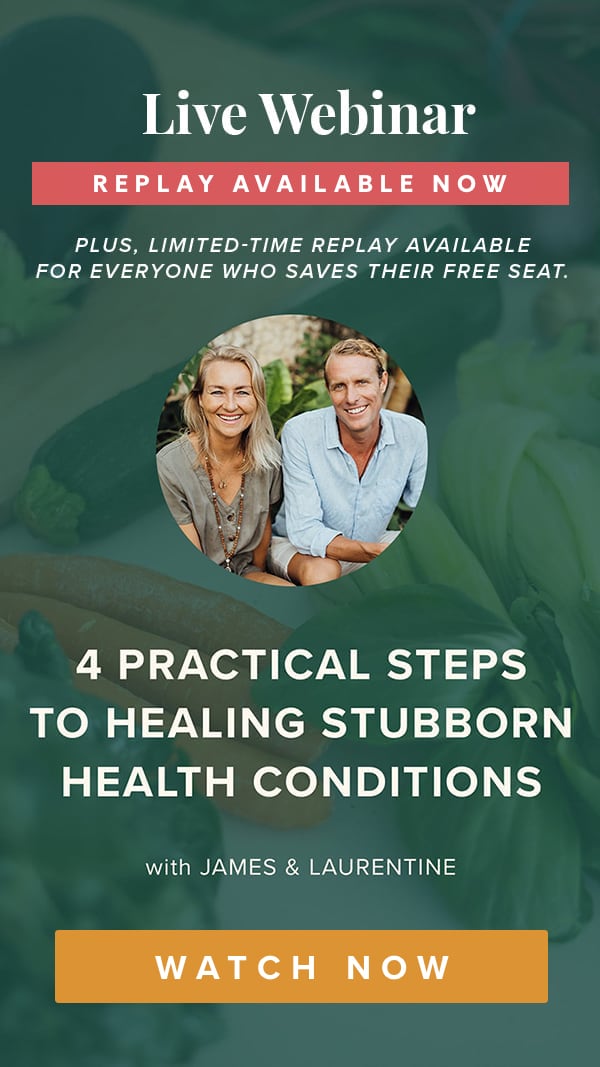Eliminate Suffering From PMS In 5 Simple Steps
"Seventy-five percent of women suffer from headaches, mood swings, bloating, and other problems that threaten their relationships, work life, and well-being." It's a statement that most of us unconsciously accept without a second thought. But it doesn't have to be this way ...
It's true that the symptoms of premenstrual syndrome (PMS), like mood swings, irritability, depression, anxiety, fluid retention, bloating, breast tenderness, sugar cravings, headaches, and sleep disturbances, affect 75 percent of women. And in 20 percent of those women, the symptoms are so severe that they need medical treatment. About eight percent have such extreme symptoms that the problem has been given a new name: premenstrual dysphoric disorder (PMDD).
But just because you're a woman doesn't mean you have to live with these symptoms. The real fact is that suffering related to menstrual cycles is unnecessary -- and not caused by bad luck, but by bad habits, environmental toxins, and stress.
Of course, the drug companies don't want you to know that! So the conventional treatments for PMS range from anti-inflammatory drugs such as Advil or Aleve to birth control pills. And then there are the big guns...
These include prescription medications such as danazol, a drug that suppresses ovulation and causes increased facial hair, acne, and a deep voice. Newer, very expensive drugs called gonadatropin-releasing hormone (GnRH) analogs actually change brain chemistry to turn off the ovaries' production of estrogen and progesterone -- but they also lead to osteoporosis.
Sometimes, diuretics like spironolactone are used to treat fluid retention. A drug called bromocriptine can be used to stop prolactin production and is used to treat breast tenderness.
No wonder the drug companies want you to believe that PMS is inevitable. Recently, they even helped create a new disease -- PMDD -- and a new indication for a drug whose patent was running out: Prozac (now called Sarafem). What's wrong with this picture?
It's based on the assumption that the symptoms of PMS are an inevitable part of being a woman and require "medical intervention" with serious medication to correct them. Nothing could be further from the truth!
To think that 75 percent of women have a design flaw that requires medical treatment to live a normal life is just absurd.
If you are one of the many women that suffer from PMS, you can end your suffering using five simple dietary and lifestyle interventions. In today's blog I will explain how to do that. But first, I want to tell you a story.
Curing PMDD Without Medications
This is the story of a patient of mine with PMDD who was barely able to work or function in her family -- suffering three weeks out of the month. She was thirty-seven years old (many women feel worsening PMS symptoms as they get into their later reproductive years). She was severely depressed, fatigued, and anxious, and suffered severe food and sugar cravings, which led to overeating and weight gain.
She also had joint pain, breast tenderness, heavy bleeding, hot flashes, dry skin, acne, hair loss, memory problems, poor sleep, and no sex drive. She also complained of gas and bloating.
What about her diet?
Well, she didn't drink alcohol, but was a big coffee drinker. And she started the day with a bagel and cheese, ate a cafeteria lunch, snacked on chocolates in the afternoon, and had a healthy dinner but binged later on ice cream, chips, and Cheerios. She also ate a lot of dairy.
Hers is a story that I hear all too often. But the good news is that I was able to give her a simple solution that didn't involve taking medication.
We know that sugar, caffeine, alcohol, stress, and lack of exercise all contribute to worsening PMS. It is also true that dairy consumption can worsen hormonal imbalances because of all the hormones in milk.
So I had her change her diet, take a few supplements and herbs, and start exercising -- and within just one cycle, her life changed. The results were dramatic. All of her symptoms resolved, she lost weight, and dramatically increased her energy. Her mood stabilized and her acne and dry skin cleared up.
The approach I used to treat this patient is part of an approach called systems, or functional, medicine. That means that I define the imbalance (in this case, severe hormonal imbalances), address the causes (diet and lifestyle), and then help the body repair and regain balance. Once this is done, the body's natural intelligence takes care of the rest.
So what is the REAL underlying cause of PMS?
The real cause for PMS is simply this: Your hormones become unbalanced, your estrogen levels increase and progesterone levels decrease, either relatively or absolutely.
There are many things that promote these hormone imbalances, such as a high-sugar, refined carbohydrate diet, caffeine, stress, dairy, hormones in dairy products and meat, and estrogen-like toxins from pesticides and pollution. Alcohol also contributes to problems because it damages the liver and prevents it from excreting excess estrogen.
Constipation and imbalances in the gut bacteria can worsen the situation, because they lead to the reabsorption of estrogen from the gut back into your blood, even after your liver has tried to get rid of it.
Your body also needs exercise to help balance hormones. So if you aren't moving your body enough, it's likely this is part of the problem as well.
Fortunately, good research shows that there many ways to get hormones back in balance -- without drugs. Here's my plan for preventing PMS and PMDD. Even though some of my suggestions may seem severe, science shows that they work. Give them a try and you will see in just one or two cycles how much better you feel.
Five Simple Steps to Eliminate PMS
1. Clean Up Your Diet
This means:
- Stop eating refined flour, sugar, and processed foods.
- Cut out caffeine.
- Stop drinking alcohol.
- Balance your blood sugar by eating protein, such as a protein shake, eggs and nut butters, for breakfast.
- Eat evenly throughout the day and don't skip meals.
- Don't eat within three hours of bedtime.
- Cut out all dairy and consider eliminating other common allergens for a few months, especially gluten.
- Increase fiber in your diet from vegetables, fruit, nuts, seeds, beans, and whole grains. Two tablespoons of ground flax seeds a day are especially helpful in correcting constipation and balancing hormones. Put them in a shake or sprinkle them on salads or food.
- Increase omega-3 fats by eating more wild fish like sardines, herring, and wild salmon, as well as omega-3 eggs and walnuts.
- Eat organic food, especially animal products, to avoid environmental estrogens from pesticides.
2. Take Supplements
A number of supplements have been shown to help ease PMS symptoms by improving metabolic function and hormone metabolism. Here are the superstars:
- Magnesium citrate or glycinate -- Take 400 to 600 mg a day.
- Calcium citrate -- Take 600 mg a day.
- Vitamin B6 -- Take 50 to 100 mg a day along with 800 mcg of folate and 1,000 mcg of vitamin B12.
- Evening primrose oil -- Take two 500mg capsules twice a day.
- EPA/DHA (omega 3 fats) -- Take 1,000 mg once or twice a day.
- Taurine -- Take 500 mg a day to help liver detoxification.
- A good daily multivitamin (all the nutrients work together)
Herbs and phytonutrients can also be very helpful. Here are the best studied and most effective:
- Chasteberry fruit extract (Vitex Agnus-astus) can help balance the hormones released by the pituitary gland that control your overall hormone function. Studies of over 5,000 women have found it effective. Take 100 mg twice a day of a 10:1 extract.
- Wild yam (Dioscorea villosa) and cramp bark (Viburum opulus) can help regulate cycles and relieve menstrual cramps.
- Dandelion root can help with liver detoxification and works as a diuretic.
- Isoflavones from soy, red clover, or kudzu root improve estrogen detoxification by boosting the activity of specific detox enzymes. They can be taken as supplements or consumed in the diet.
- Flax seeds contain lignans that help balance hormone metabolism and block the negative effects of excess estrogens.
- Chinese herbal formulas may also help. One of the most effective is Xiao Yao San, or Rambling Powder. It contains: Bupleurum Root (Bupleurum chinense), Chinese Peony Root (Paeonia lactiflora), Dong Quai Root (Angelica sinensis), Bai-Zhu Atractylodes Root (Atractylodes macrocephala), Poria Sclerotium (Poria cocos), Ginger Rhizome (Zingiber officinale), Chinese Licorice Root (Glycyrrhiza uralensis),and Chinese Mint Leaf (Mentha haplocalyx)
- Replacing healthy bacteria in the gut also helps normalize estrogen and hormone metabolism. Take 5 to 10 billion live organisms in a daily probiotic supplement.
- For intractable cases, I will occasionally use topical, natural bioidentical progesterone in the last two weeks of the menstrual cycle. The usual dose is 1/2 tsp (20 to 40 mg) applied at night to thin skin areas for the last two weeks of the menstrual cycle.
3. Get Moving
Exercise is very important for balancing hormones. Aim for 30 minutes of aerobic exercise, four to five times a week.
4. Address Stress
Dealing with stress is also critical. Take a hot bath at night, get a massage, try yoga, learn deep breathing or meditation. These techniques and others can help balance hormones.
5. Try Alternative Therapies
Therapies such as acupuncture and homeopathy may help. One clinical trial showed that individualized homeopathy is effective in treating PMS. Five homeopathic medicines were used: Lachesis, Natrum muriaticum, Nux vomica, Pulsatilla, and Sepia.
Do you suffer from PMS or have been told that you have PMDD?
How do your diet and lifestyle affect your premenstrual symptoms?
Share your tips and successes with others in the comment section below.
Discover how to lose excess fat from your belly, face & thighs in less than 7 days with this simple ancient practice. Watch the Detox Masterclass here. Playing for a limited time!







